On Families and Equality
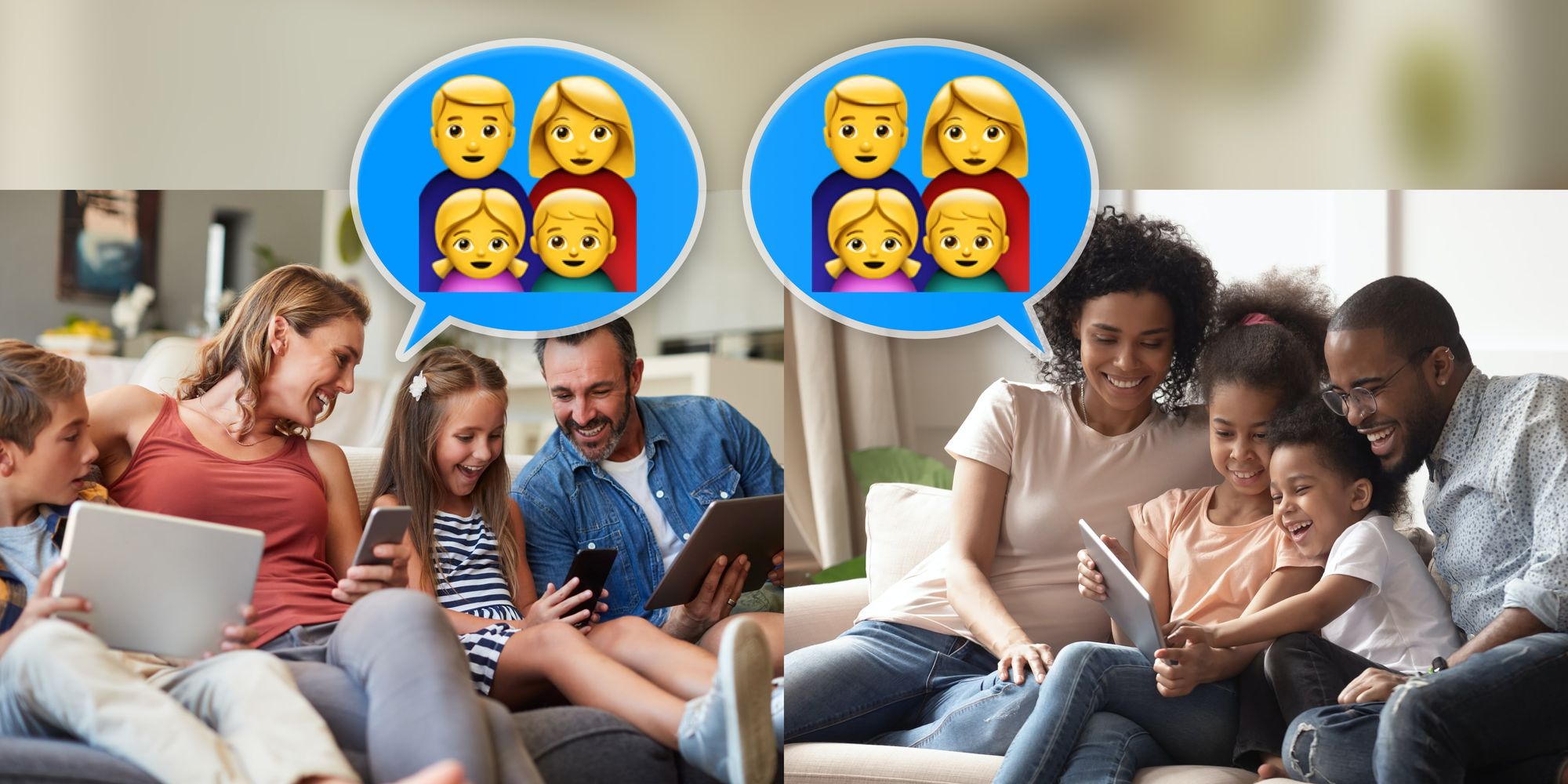
What does equality look like on the emoji keyboard?
Much progress has been made in recent years, with emojis that were once white and male[1] now offering a choice of skin tones and equal gender options.
Last year 100 new emojis were released to support combinations of people holding hands, with each allowing a different skin tone.
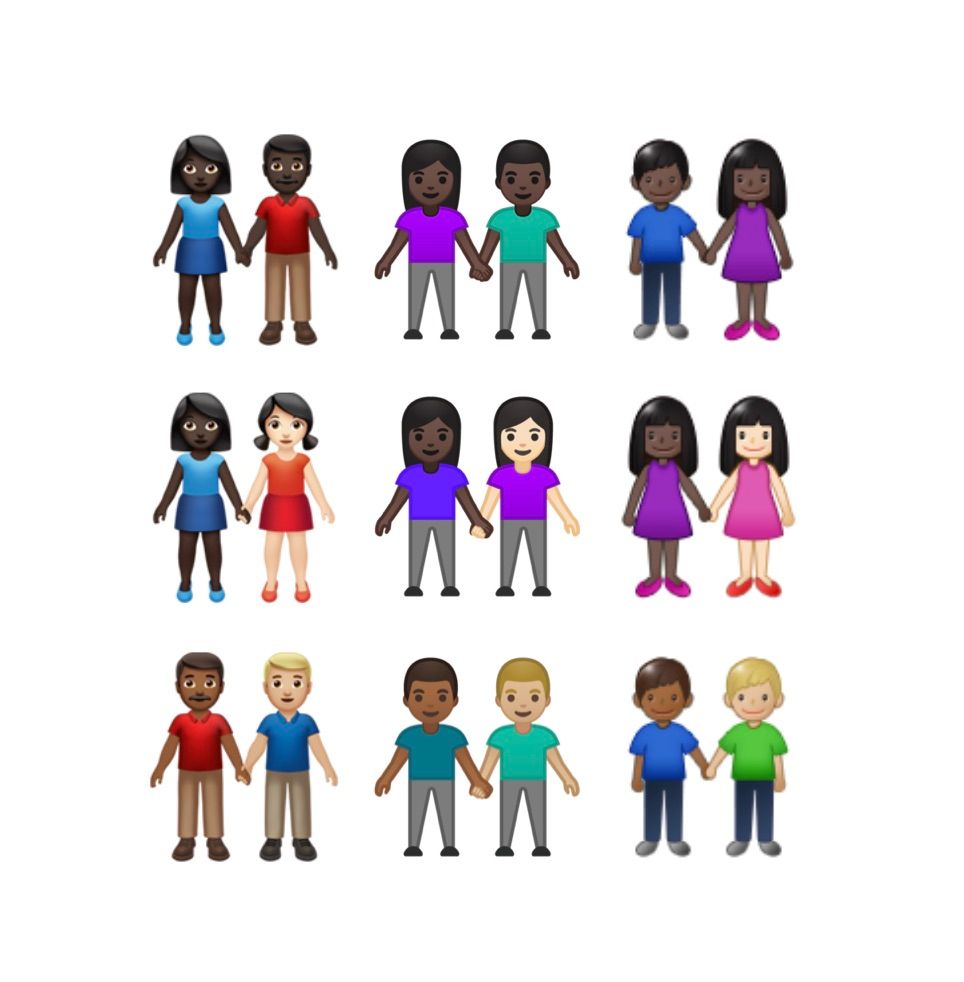
Above: Holding-hands emojis gained skin tone support in 2019. Images L–R: Apple, Google, Samsung / Emojipedia composite.
But what about the families? 26 family units now sit on the emoji keyboard, and to the increasing confusion of users, none permit a change of skin tone on most platforms.
👪👨👩👦👨👩👧👨👦👦👨👩👧👧👩👩👧👧👨👨👧👦👨👦👨👧👩👧👦👨👨👦👦👨👨👦👩👧👧👨👩👧👦👨👨👧👩👩👧👦👩👩👦👨👩👦👦👩👩👦👦👩👦👦👨👧👦👩👦👨👧👧👩👧👨👨👧👧
A report published by the Unicode Emoji Subcommittee[2] for last week's Unicode Technical Committee meeting reviewed all the possible options to expand skin tone support for families.
The finding of the report was that the status quo remains the preferred option.
That is: no new family emojis for the forseeable future.[3]
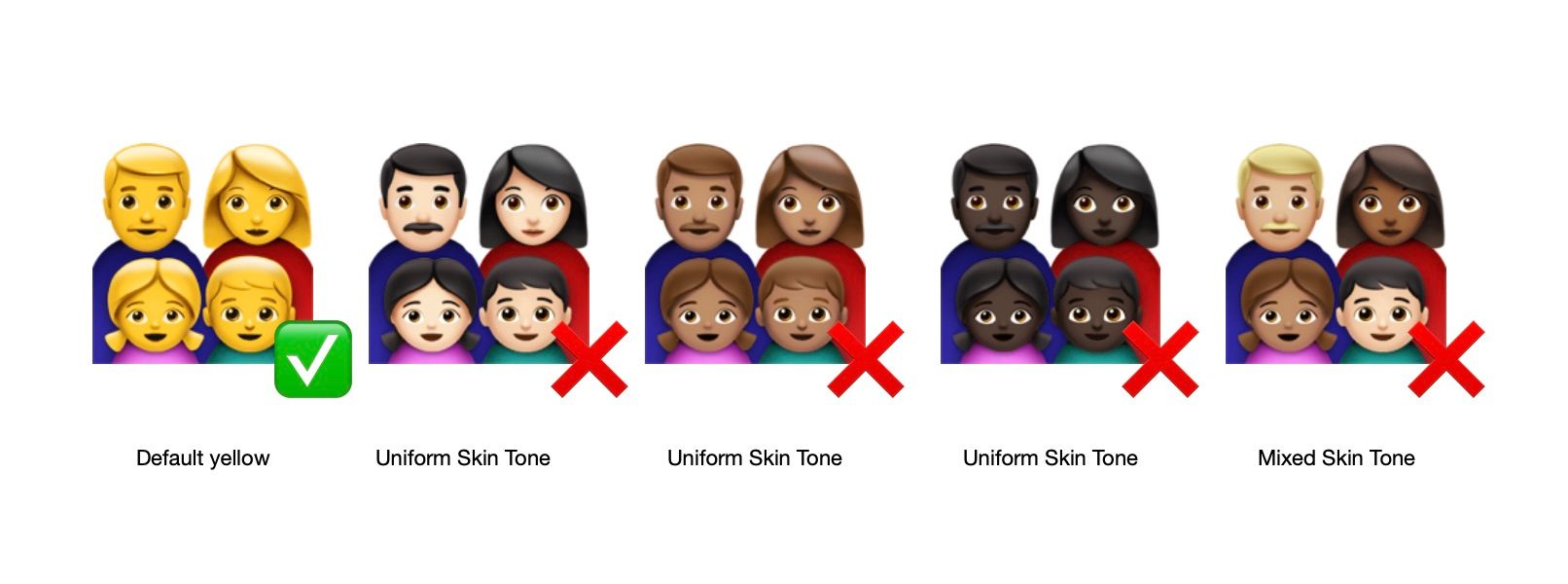
Above: Unicode has decided against skin tone support for family emojis. Image: Emojipedia mockup based on Apple designs.
What is the problem?
Families are currently shown on most major platforms as default yellow.[4] This color is intended to represent a non-human skin tone. The families aren't white, nor are they black. At least that is the intention.
Black Families have been a consistent request from Emojipedia users for a number of years, and a casual glance at Twitter shows this is consistently viewed as an oversight.
It seemed only reasonable that people might have assumed black or mixed families could be up next. After all, nearly every other emoji with a default yellow skin tone now supports all five skin tone modifiers permitted in the Unicode Standard.[5]
Required viewing: @aparnapkin's emoji standup.
— Jane Solomon (@janesolomon) March 27, 2018
"Why does Emoji Corp think it's so much more important to represent a multicultural boy band 👱♂️👱🏻♂️👱🏼♂️👱🏽♂️👱🏾♂️👱🏿♂️ than a beautiful, diverse family?" pic.twitter.com/OPgxWTquTo
A recent study from Alexander Robertson, Walid Magdy, Sharon Goldwater of Edinburgh University found that people with light skin are more likely to use the default (yellow) skin tone than any other group.
Meanwhile in the same study:
“a higher proportion of dark-skinned users use skin tone modifiers and they use them more frequently”
There can be many layers to how an emoji can be used and for what purpose, but it is quite apparent that white families can more easily use default yellow emojis for self representation compared to black families.
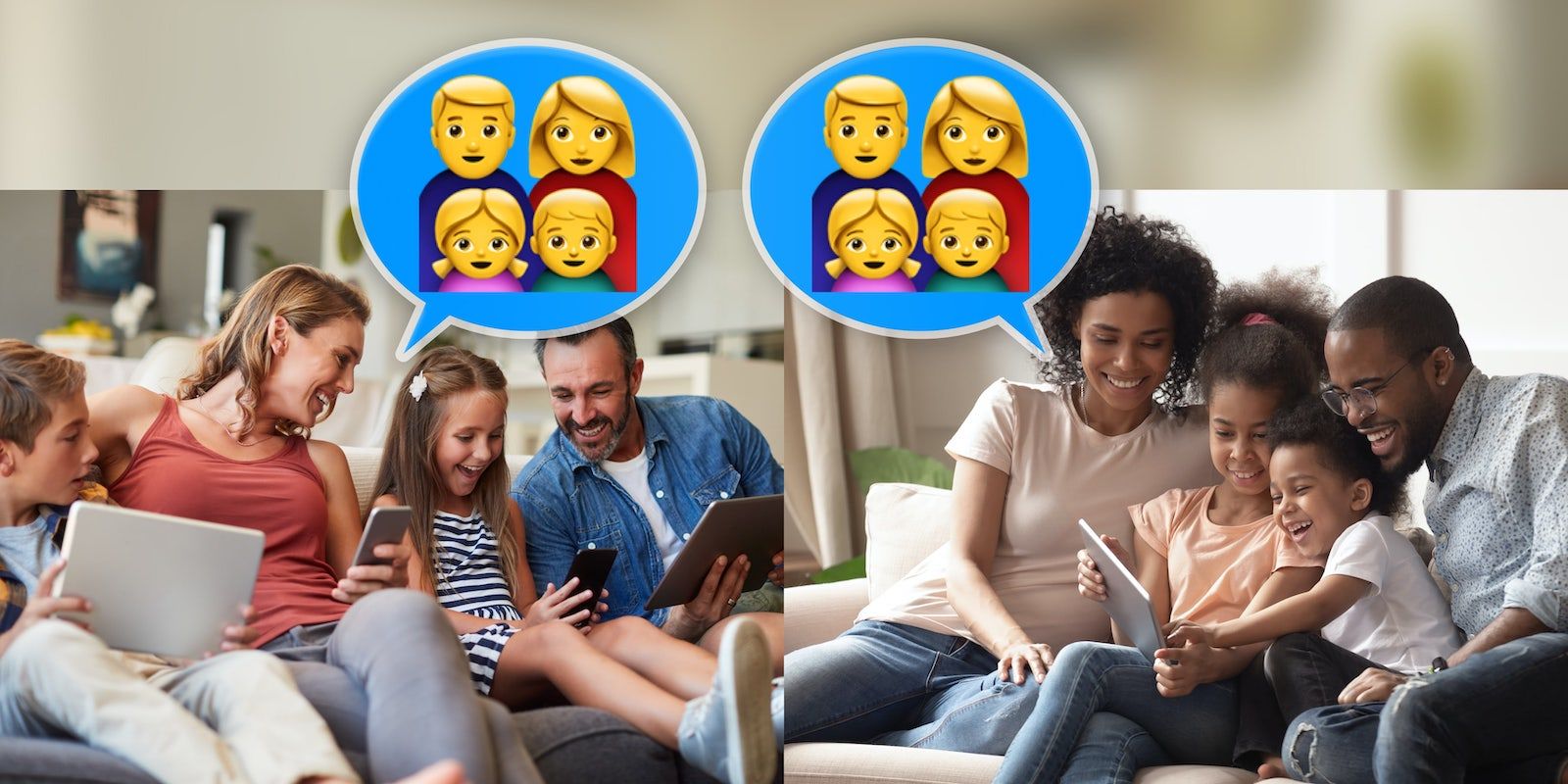
Above: Which family is better represented by a default yellow family emoji? Image: iStockphoto photos, Apple emoji designs, Emojipedia composite.
The options
Seven unique options were looked at by Unicode when it came to the challenge of adding skin tones to families.
One option assessed was to support modifier options for each family member, allowing any mix of skin tones. This was part of a proposal from 2019, which recommended 7,230 new emojis required to allow families to have the same flexibility afforded to the couples holding hands.
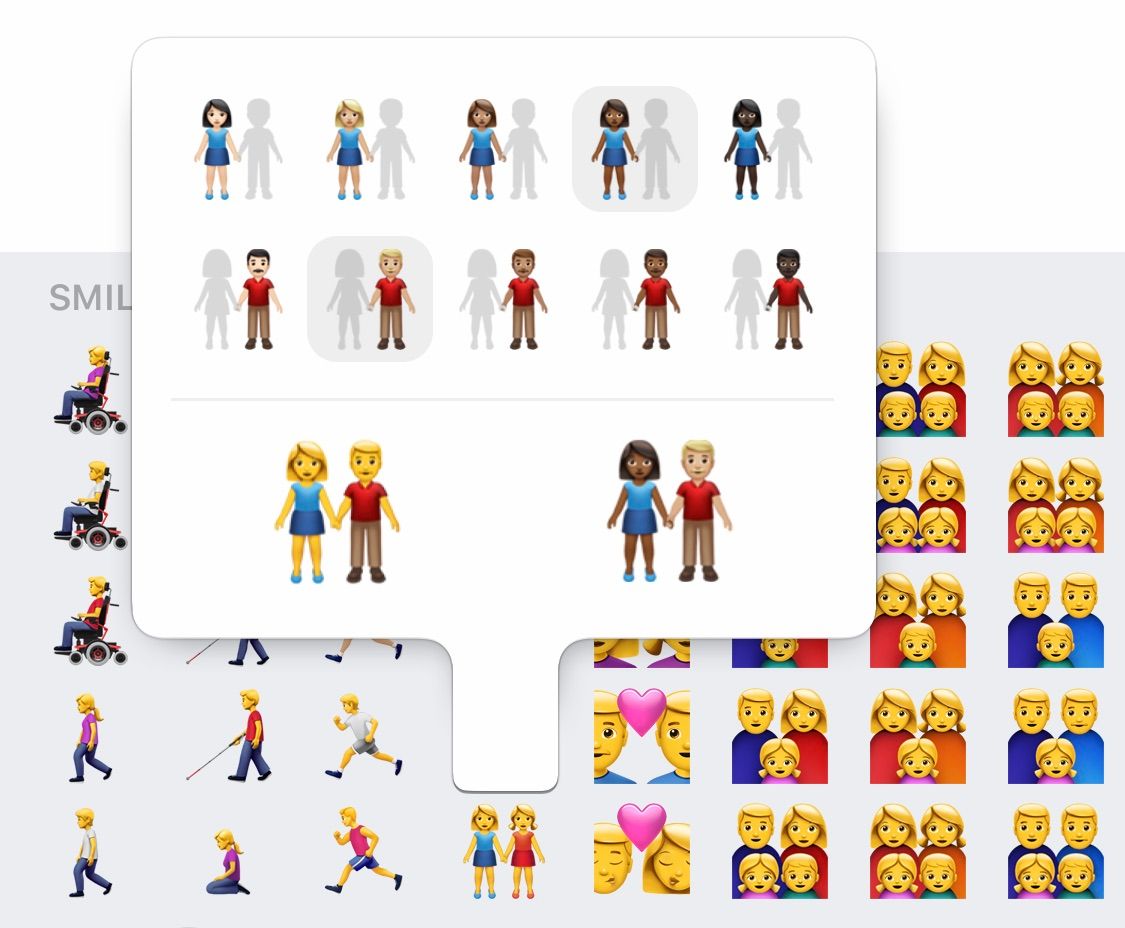
Above: Apple's emoji picker with the multi-skin-tone selector added in 2019.
Another possibility is to limit the choice to only three of the five skin tone options for each family member. Or to allow only one family to gain mixed skin tone support (e.g. allowing 👨👩👧👦 Family: Man, Woman, Girl, Boy to have skin tone options) with the others remaining as-is.
The current view from the report is that these all are unsuitable options, for different reasons.
The former was declined for technical reasons (over 7,000 new emojis would truly be strain for some platforms to handle, especially when supporting older devices), and the latter for pragmatic reasons (if you only add some skin tones or some families, the exclusion only shifts around).
Microsoft in 2016 did add every single family combination, as a possibility in Windows 10, helped by the vector emoji font Segoe Color Emoji.[6]
Something simpler
An option raised in the Unicode report is the idea of a consistent "uniform" skin tone, where each family member would be implemented with the same skin tone as the others.
This option would only require 135 new emojis. With over 7,000 emojis needed for mixed skin tone support, 135 seems a positively tiny set of additions by comparison.
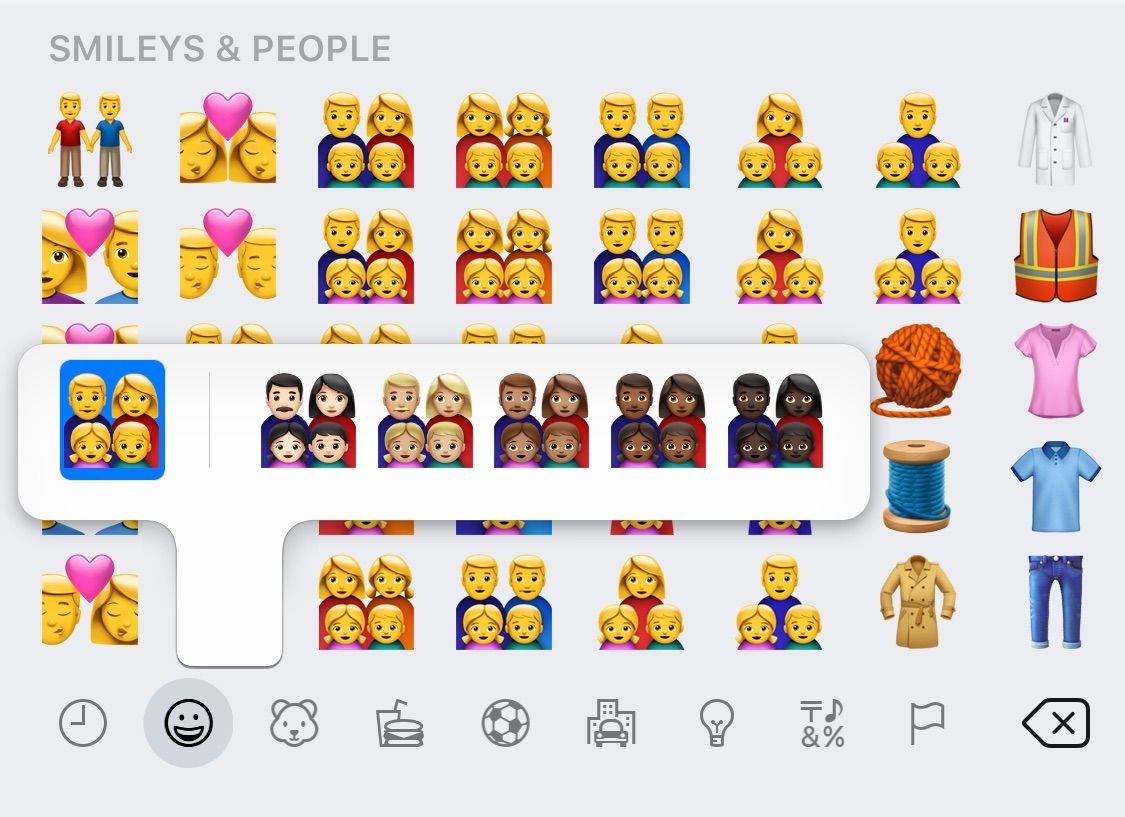
Above: Mockup of an iOS emoji keyboard if Uniform skin tones were implemented. Image: Emojipedia mockup based on Apple designs.
The report from Unicode declines the Uniform Skin Tone option in part due to:
“Vendors expressed concerns about inadvertent and unintentional messaging on race, skintone, and family composition.”
Incidentally, Facebook added family skin tone support in 2017 with 125 family options[7], which it retains today.
Unicode does not restrict any individual vendors from extending skin tone support to any any grouping, though without widespread cross-platform support, it's relatively inadvisable to implement emoji sequences that won't display correctly on other platforms.
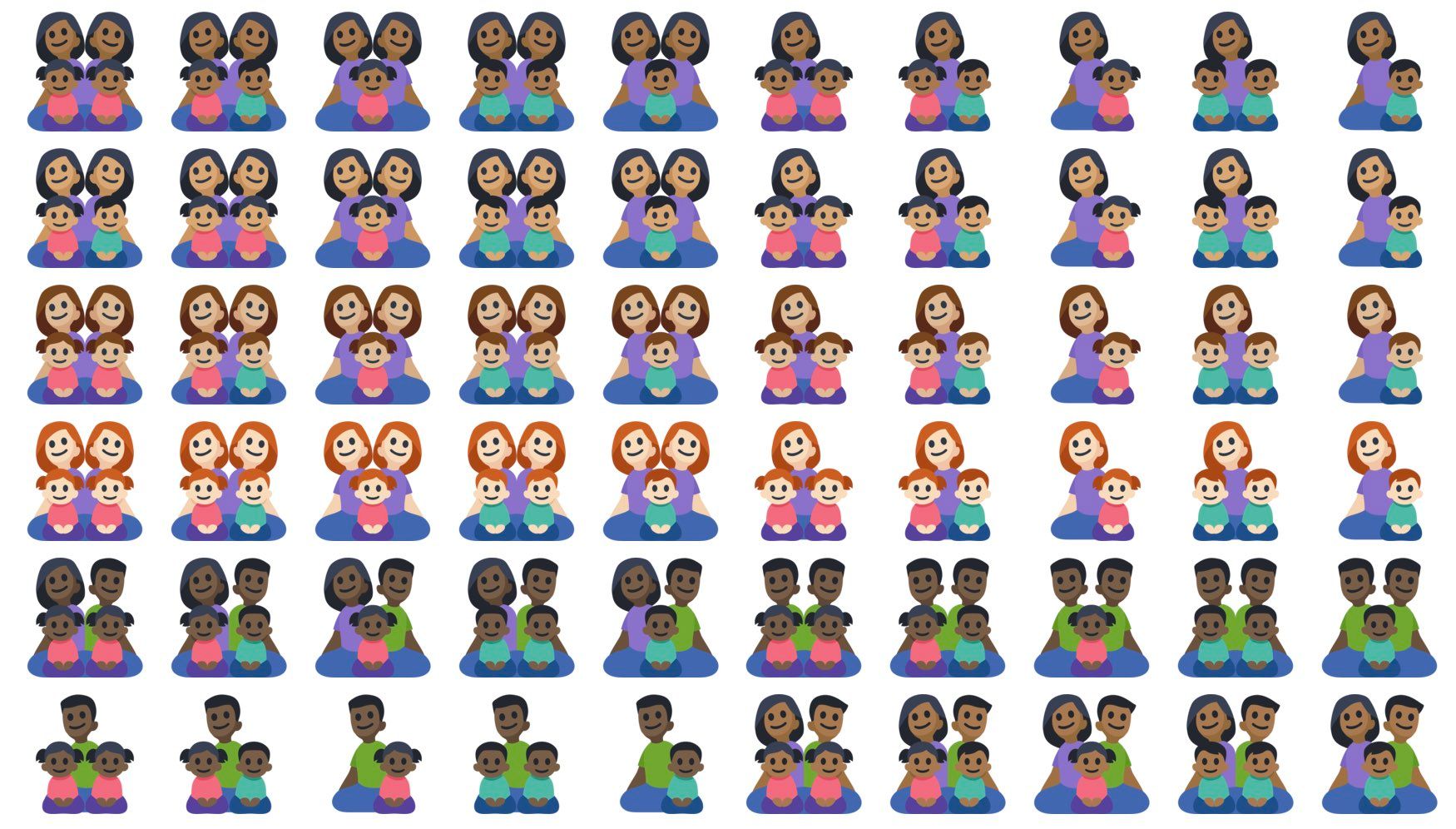
Above: Skin tone options for families have been on Facebook since 2017.
The recommendation
The entire document on family skin tone combinations is a helpful read to get up to speed on the reasoning behind declining each option.
The recommended option that has been chosen: the status quo. The yellow set of families, just as they appear today.
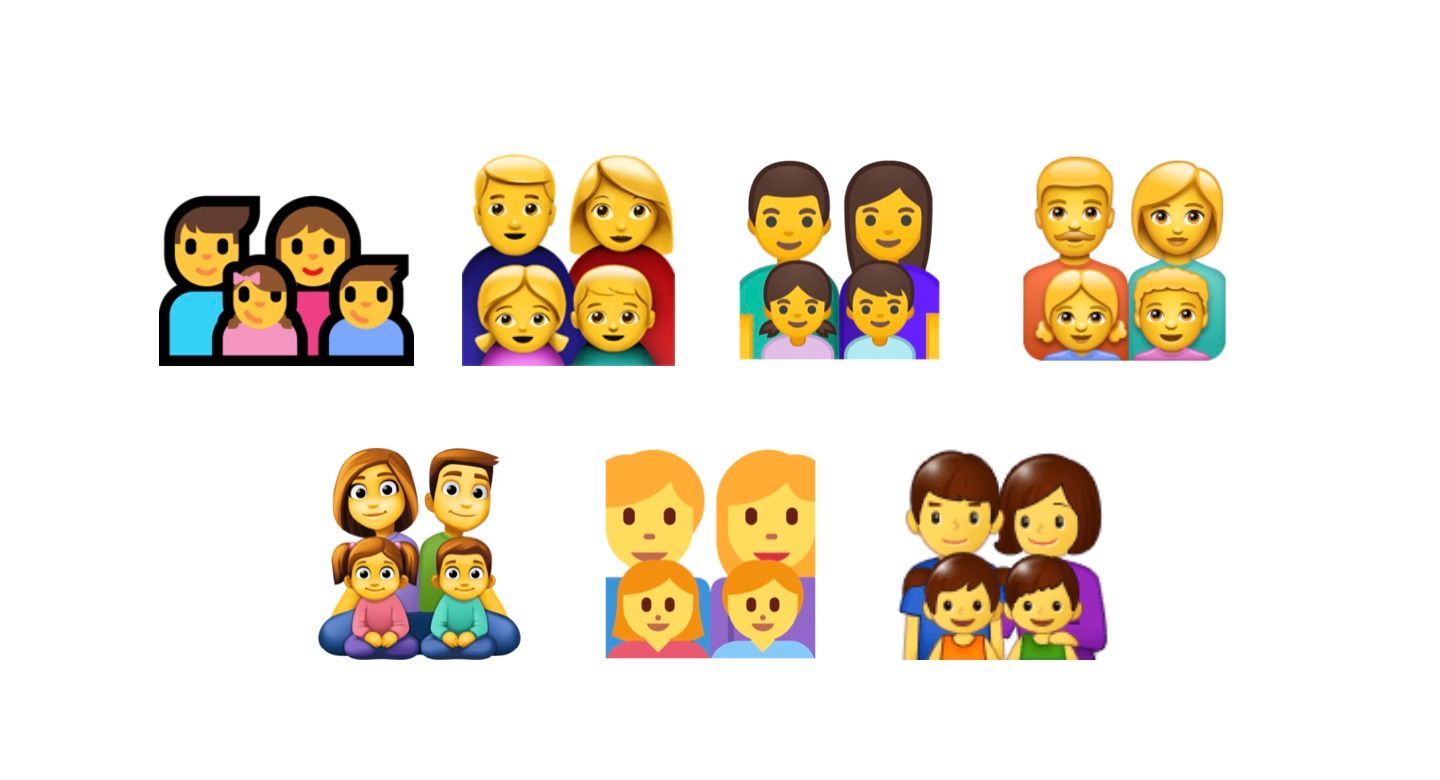
As with any committee or standards body, there is an interest in ensuring all member views are represented. Having Unicode recommend changes that aren't supported by vendors only results in documentation being out of sync with reality.
To that end, this report is useful as a reflection of where the consensus lies today.
I do think it's worth taking a closer look at one option in this report. One that might have more merit than is first apparent.
An alternative
There is one simple way out of this problem. An implementation that is unlikley to win any fans, but is technically feasible and fair to users.
To recap, the prevailing view right now is that it is:
a. technically impractical to add thousands of family emojis, and
b. undesirable to add just a subset of families
Therefore:
c. what if the families just weren't yellow any more?
Consider the impact if the family emojis showed up as plain silhouettes on the keyboard instead of yellow families.[8]

Above: Mockups of emoji family silhouettes based on current vendor designs. Image: Apple/Google designs + Emojipedia Silhouette Mockups.
The Unicode response to this possibility is that:
“The silhouette approach left the renderings being impersonal and overall extremely unnatural”
It is true that silhouettes are less personal than semi-realistic people.
It's also true each silhouette family emoji could end up looking quite similar on the keyboard. They might be less popular as a result. They certainly aren't natural.
When it comes to emoji equality: it does not seem fair to leave a set of emojis on the keyboard that approximate a white family, while black families are left with nothing resembling their own family.
If the alternative is a less-useful set of families on the keyboard for everyone, so be it.
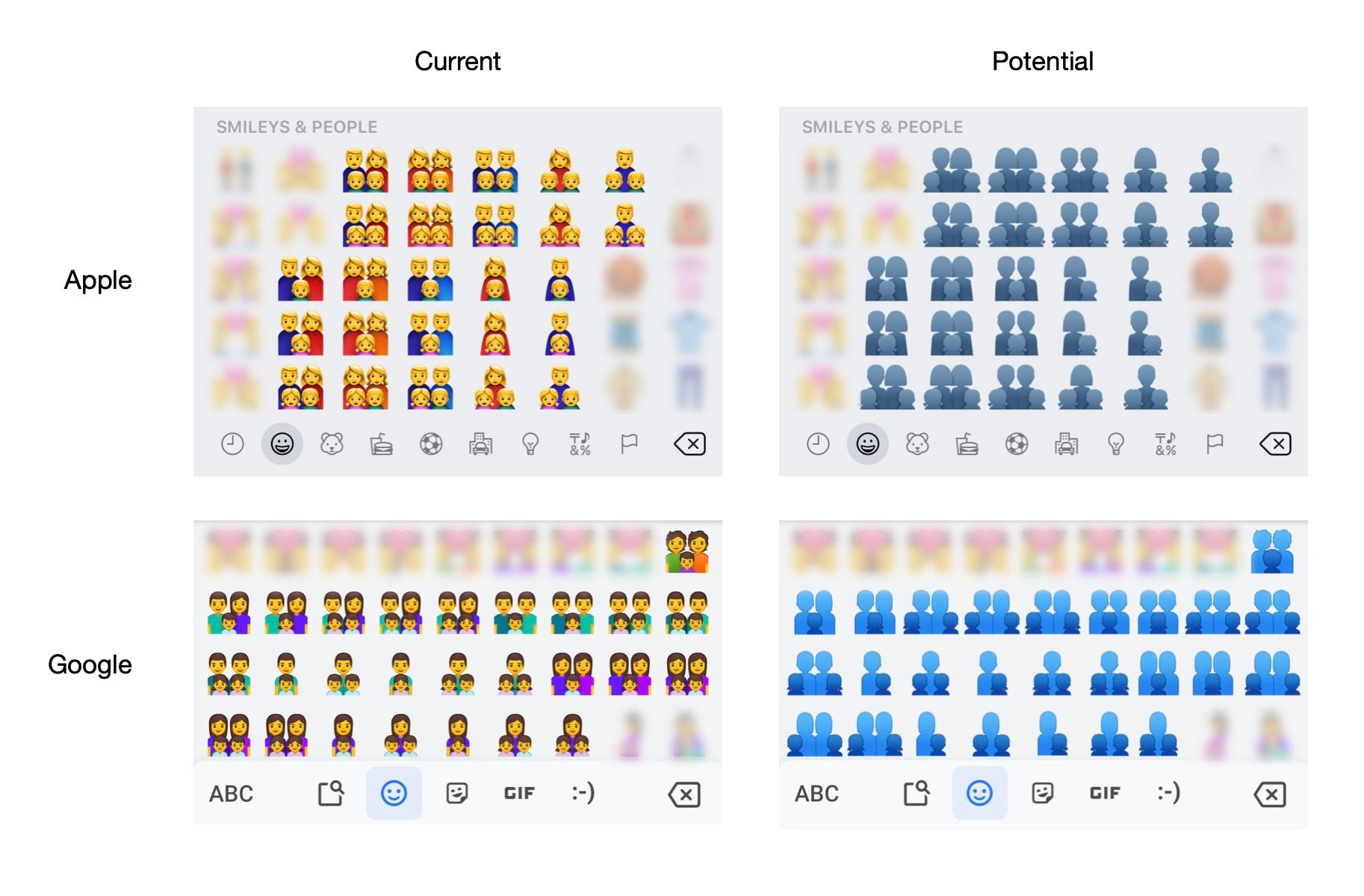
Above: Could a simple approach solve this issue? Images: Screenshots from iOS and Android (left) / Emojipedia mockups (right).
Some benefits of this approach include:
- Upholding backward compatibility. If anyone used a family emoji in the past, it will still be somewhat clear what emoji that was - even if it takes a new silhoutette form.
- Should vendors want to stash these less-useful silhouette families in an obscure section of the emoji keyboard (like 👤👥🗣), they won't seem out of place.
- Unicode makes a note about encouraging use of individual people in sequence, for maximum flexibility. By downgrading the usefulness of this current family set, the alternative becomes more palatable.
- Any concerns that supporting a subset of skin tones for families could result in a perception that the implementation is incomplete would be removed. It's clear that silhouettes never get skin tones.
Generally when I cover the topic of family emojis, the strong view returning is that whatever the challenges, vendors should just get on with making a black family emoji.
The obvious choice ahead isn't clear, but it seems there is a public consensus that the status quo on the family emojis shouldn't remain indefinitely.
Silhouettes might please no-one, but at least they might displease everyone equally.
Before human emojis were yellow and supported gender options, most early platforms represented roles such as the police officer or construction worker as white men. ↩︎
Disclaimer: I am a member of the Unicode Emoji Subcommittee, and Emojipedia is a voting member of the non-profit standards body the Unicode Consortium. ↩︎
There appears to be very little demand for a white family emoji, other than perhaps for consistency reasons. I know I've personally never seen a request for a white family emoji, though I have no doubt they must exist. The real demand comes from families with darker skin tones who don't feel represented by the yellow default. ↩︎
When implementing skin tones in 2015 Unicode was hesitent to recommend which color should be used for default skin tones. Microsoft briefly used a shade of gray which has since been replaced with yellow. The current guidelines state: "The Unicode emoji characters for people and body parts are intended to be generic and shown with a generic (nonhuman) appearance, such as a yellow/orange color similar to that used for smiley faces" ↩︎
Unicode plans show other emojis such as 💑 Couple with Heart, 💏 Kiss and 🤝 Handshake lined up to likely include skin tone options in a future release. ↩︎
Worth noting the 50,000+ family emoji combinations supported on Windows don't appear in any emoji picker UI, so it's more of an Easter Egg in the font than a fully-fledged implemention. The reason Microsoft's number is so high is their font also allows a baby to be added to the family, and mix-and-matching of yellow and realistic skin tones, which is none of Unicode's reviewed options. ↩︎
The 'missing' 10 family emojis are from a relatively new change where the emoji simply named 👪 Family was given a gender-inclusive appearance, whereas this previously duplicated 👨👩👦 Family: Man, Woman, Boy on most platforms. ↩︎
This is listed in the Exploration and Recommendations document as option #5. ↩︎
